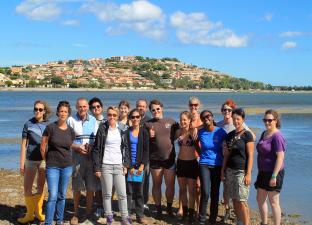 Ecology and functions of marine sediments
Ecology and functions of marine sediments
October 1-19, 2018 (6 ECTS) - Observatoire Océanologique de Banyuls-sur-Mer

Soft sediments cover most of the seafloor and thus account for the largest ecosystem on Earth). In coastal areas, they are find in a wide range of habitats (estuaries, deltas, muddy coastal sediments, wetlands) where they ensure major ecosystemic functions (such as carbon sequestration, nitrogen cycling, marine productivity…). Sediment characteristics (grain size, organic matter, oxygenation…) affect community structure of the benthic organisms, which in turn influence the processes and functions of these ecosystems. Due to their close interactions with land changes and direct contact with increasing populations, coastal areas are directly subjected to multiple human impacts. There is thus a growing concern on how coastal areas will adapt and how to achieve coastal sustainability.
This course provides a good background for anyone who wants to study benthic ecology in coastal systems and underlines the particularities of the Mediterranean Sea. It is intended for students who want to embrace an academic career as well as those who intend to be involved in environmental management of the littoral.
* Teaching methods
Lectures will put an emphasis on the coupling between pelagic and benthic ecosystems, and on how organism-sediment interactions impact benthic biogeochemistry and coastal functions.
The key concepts presented during the lectures will be illustrated with two practical works including experiments and analyses performed by the students in the research laboratories of the Benthic ecogeochemistry group.
- PW1: Bentho-pelagic coupling
- PW2: Fate of organic matter in marine sediments.
* Final competencies
By the end of the course students will understand:
(1) what are the main processes that govern marine ecosystem functioning in coastal waters;
(2) how marine organisms affect these processes;
(3) how to study the bentho-pelagic coupling in coastal ecosystems.
Most important, students will know how to use these new competencies to manage and protect marine coastal environments.
* Learning transferable tools
-
- - Designing and peforming mesocosm experiments
- - Studying meiofauna: extraction method, biomass estimation, taxa identification
- - Determining the origin and quality of organic matter in sediments with lipid biomarkers
- - Measuring solute fluxes: chemical sensors, nutrient analyses…
- - Learning to conduct multidisciplinary research and critical thinking
- - Interpreting and reporting scientific results
* What’s more ?
A teaching team attentive to student progress and working hand to hand with the class to maximise the pedagogical opportunities.




